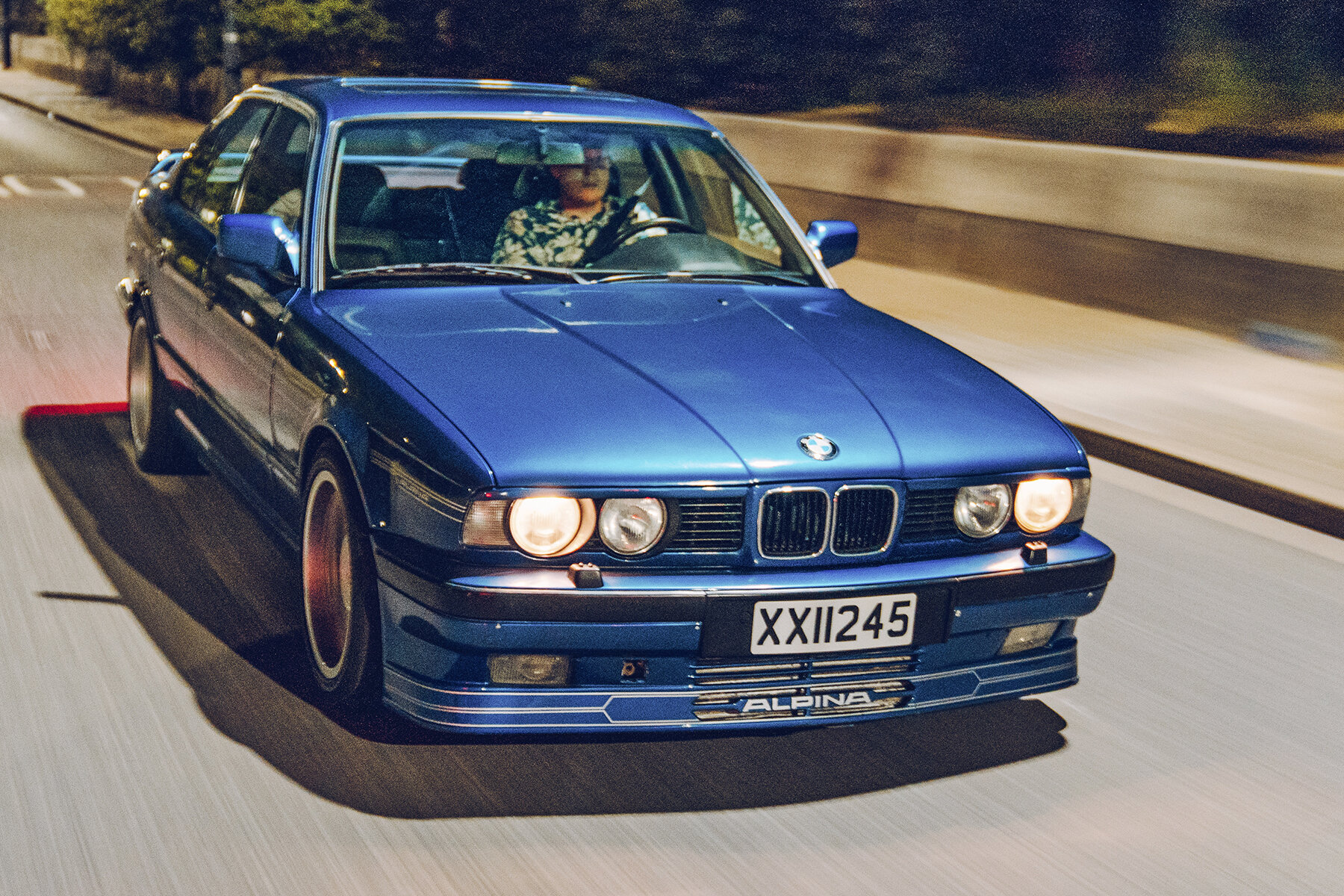London by night in supercar-slaying saloons – Alpina B10 Biturbo, Mercedes-Benz E500 Limited and Lotus Carlton. Which is the best 1990s super saloon?

► Finding out which is the best 1990s supersaloon
► Alpina and Lotus fight the might of Mercedes-Benz
► Can V8 muscle beat a pair of twin-turbo six pots?
Thirty years ago the world was a very different place. Executive saloons were seen as the pinnacle of motoring. The roads were different – no speed cameras, fewer cars. The supercar was still king, but they were a lot less user-friendly than today’s. Daily driving a Ferrari Testarossa or Lamborghini Countach in London was not for the faint of heart nor the withered of calf muscle. The Porsche 911 Turbo (930) was the best compromise, but still wasn't very practical as an executive express. What to do?
The BMW M5 (E28) came close, but the answer came at the 1989 Geneva Motor Show. The Alpina B10 Biturbo could hit 60mph in 5.1 seconds, 0.1 of a second faster than a Ferrari Testarossa. It ran to 100mph a half a second faster than a 911 Turbo, and topped out at 179mph. A saloon faster than supercars – the supersaloon was truly born.
It was a watershed era when you could have it all: a practical family saloon with room for the golf clubs and enough performance to blow bone fide exotica into the weeds. An arms race began in which supercar builders sprinkled magic dust over dowdy exec saloons. Mercedes-Benz enlisted Porsche for the 500E/E500, while Vauxhall/Opel turned to Lotus. Now it's time to see these performance icons have stood the test of time to become modern classics.
Alpina B10 Biturbo
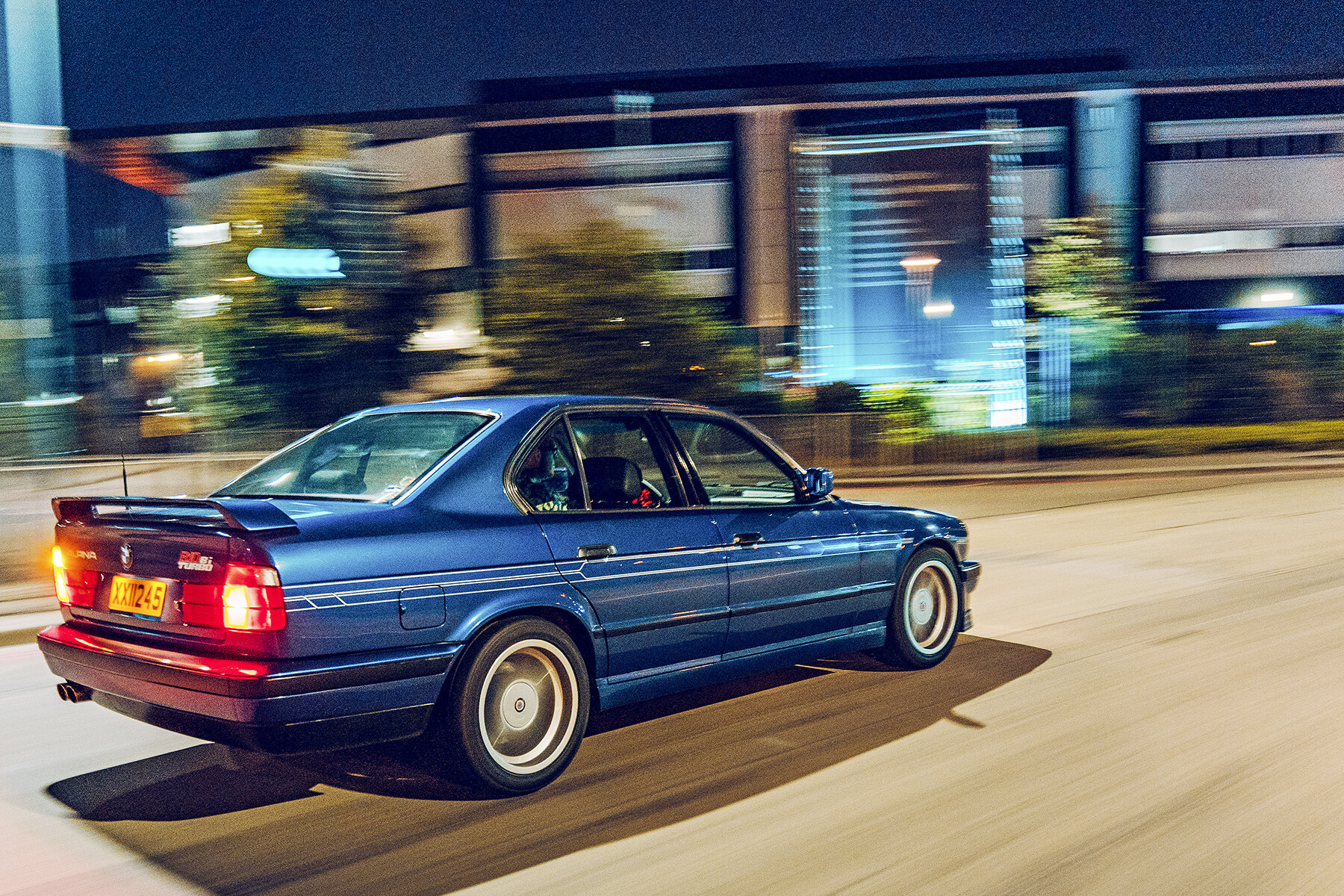
The Alpina rolls looks like it means business. That forward rake, deep chin spoiler and eyebrow lip evoke a Pamplona bull straining at the leash, but there was no bull about its performance. By 1989, Alpina had been recognised as
an individual manufacturer rather than a tuner. At 146,800DM, the B10 Biturbo was twice the price of the BMW M5 (E34), but then again Munich’s flagship was more than a second off the pace in all areas. The B10 certainly looks the business – the gorgeous 17in alloy wheels, with the Ercole Spada-inspired lines transform it from executive saloon to full-blooded supersaloon. It’s not subtle.
It makes sense to sample the Alpina first. This is the car that really broke the mould. Its 5.1-second 60mph sprint was an important marker, but it was the 384lb ft that left the Testarossa, Porsche 928 GT and 911 Turbo reeling. It all started with a normal BMW 535i. Hardly a slow car in its day, the donor car’s M30 straight six doled out 211bhp and 225lb ft – but a trip to Buchloe saw Alpina strapping two Garrett T25 turbochargers under the bonnet.
The results were astonishing. Horsepower leapt to 355bhp (or 360bhp, depending on who you talk to) and the torque to 389lb ft. That level of punch mangled the original car’s propshaft, so Alpina gave the B10 a bespoke item and a purpose-built Getrag five-speed gearbox.
Only the block, crank and basic cylinder head were carried over from the BMW M30. Mahle pistons dropped the compression ratio to 7.2:1. Bosch reprogrammed the Motronic ECU, while Alpina fitted stronger conrods, altered the valves, revised the camshaft and reworked the combustion chambers and porting. The undersides of the pistons were sprayed with oil via pressure valves specially drilled into the main bearing housings.
What’s it like to drive?

Exciting. Think 1980s turbo car and you think lag. Think again. The M30 straight six was a torquey unit to begin with, so there’s just a barely perceptible pause before the turbos kick in from around 2500rpm. The familiar M30 scream turns into a serrated buzz with a discreet hiss as the B10 inhales the tarmac like a stockbroker mainlining Columbia’s finest. 30 years may have passed, horsepower outputs may have doubled for supersaloons but this still shocks. The wallop in third is rollercoaster-heavy.
Try the same in fourth and you might be disappointed because at 70mph you’re barely doing 2000rpm, and the turbos have yet to spool up. Persistence wins. At whatever speed, at whatever time, the B10 can deliver more. 40-70mph takes just 3.1 seconds, 50-90mph 5.2.
The Alpina is driver-focused – deeply bolstered leather chairs in the company colour scheme, binnacles glowing red with naughty intent. There’s an extra bank of dials just under the normal 5 Series array, a wooden gearknob wearing the company crest, a boost adjuster and a plaque showing how rare this car is. Just 507 B10 Biturbos were built, all of them left-hand drive: those two Garretts left no room for a RHD steering column. Ours is one of only three believed to be in the UK.
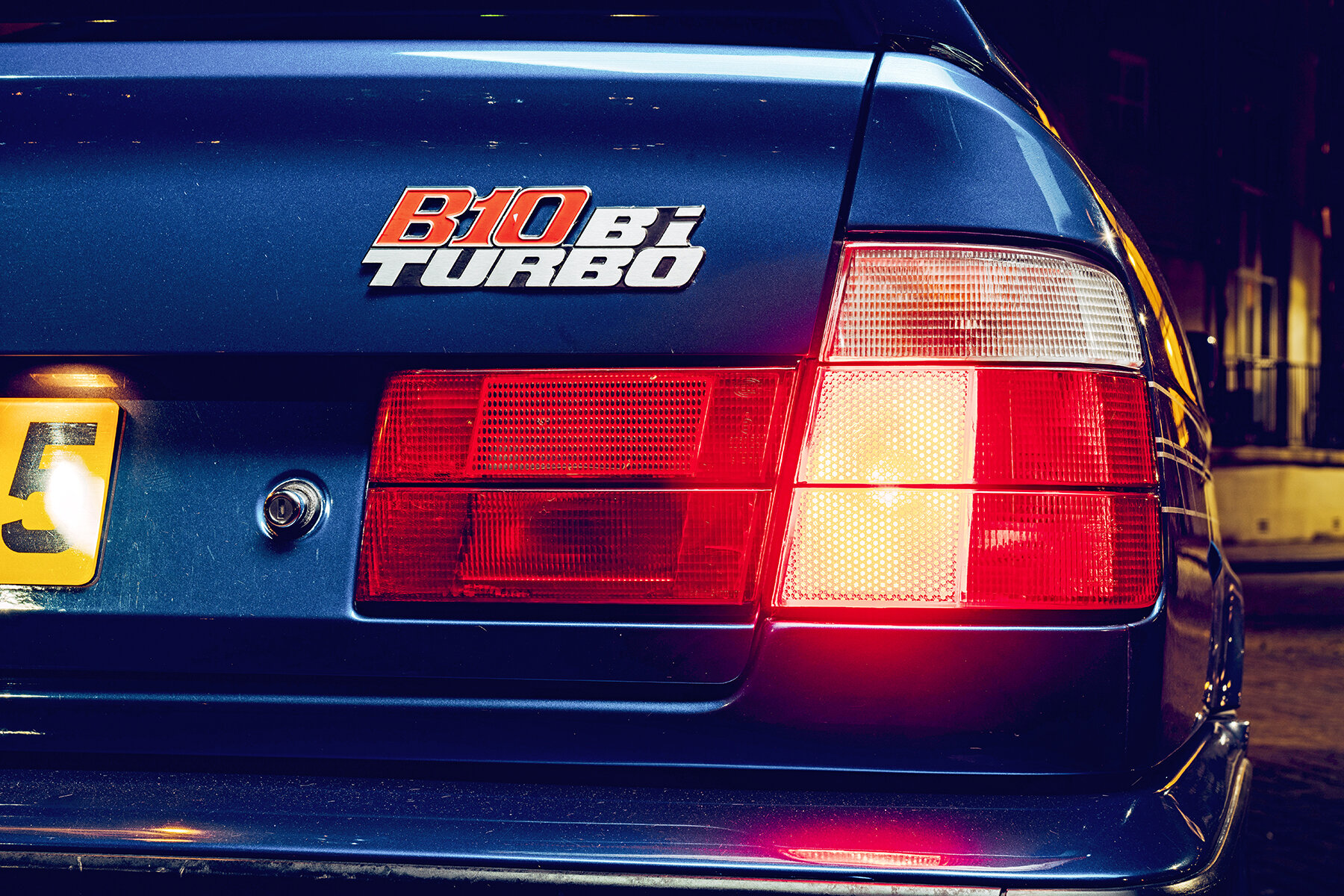
How’s it in the bends?
The Alpina is easy to get on with. Aside from some initial lightness around the centre, the steering’s full of feel. It rewards actions, not faith. To understand why, you just need to check the performance brands involved. Girling built bespoke discs for the B10, while the suspension was a mixture of Bilstein fronts and Sachs rear. It has self-levelling rear suspension, but unlike the Carlton, it has traction control. Also unlike the Mercedes-Benz, you can switch it off.
This gives the Alpina a much more amenably playful nature than the other two. Once past the initial understeer hint that perhaps you’re being a bit silly, the Alpina is biddable on the throttle, and because there’s a lot more info coming through the wheel it’s easier to place it with precision. It feels friendlier on turn-in too.
And the overall interior quality? There are few creaks or rattles, and you forget that the suspension is at least eight years older than some of your colleagues, let alone their cars. It’s hard to make the same assumption in a Carlton, even one that's done fewer than 35,000 miles. This Alpina has done 255,000km. There’s no doubt, it’ll cover the same again.
That lack of pull in fourth mentioned earlier? Bring the revs up higher and it’s still got that electrifying shove that it does in third at 40mph. We’re riding comets again, only this time the Almighty’s hand is joined by a forceful kick from Beelzebub. At whatever speed, there always seems to be more in the Alpina’s locker, a torrent of accelerative thrust that only the Carlton can match.
Lotus Carlton
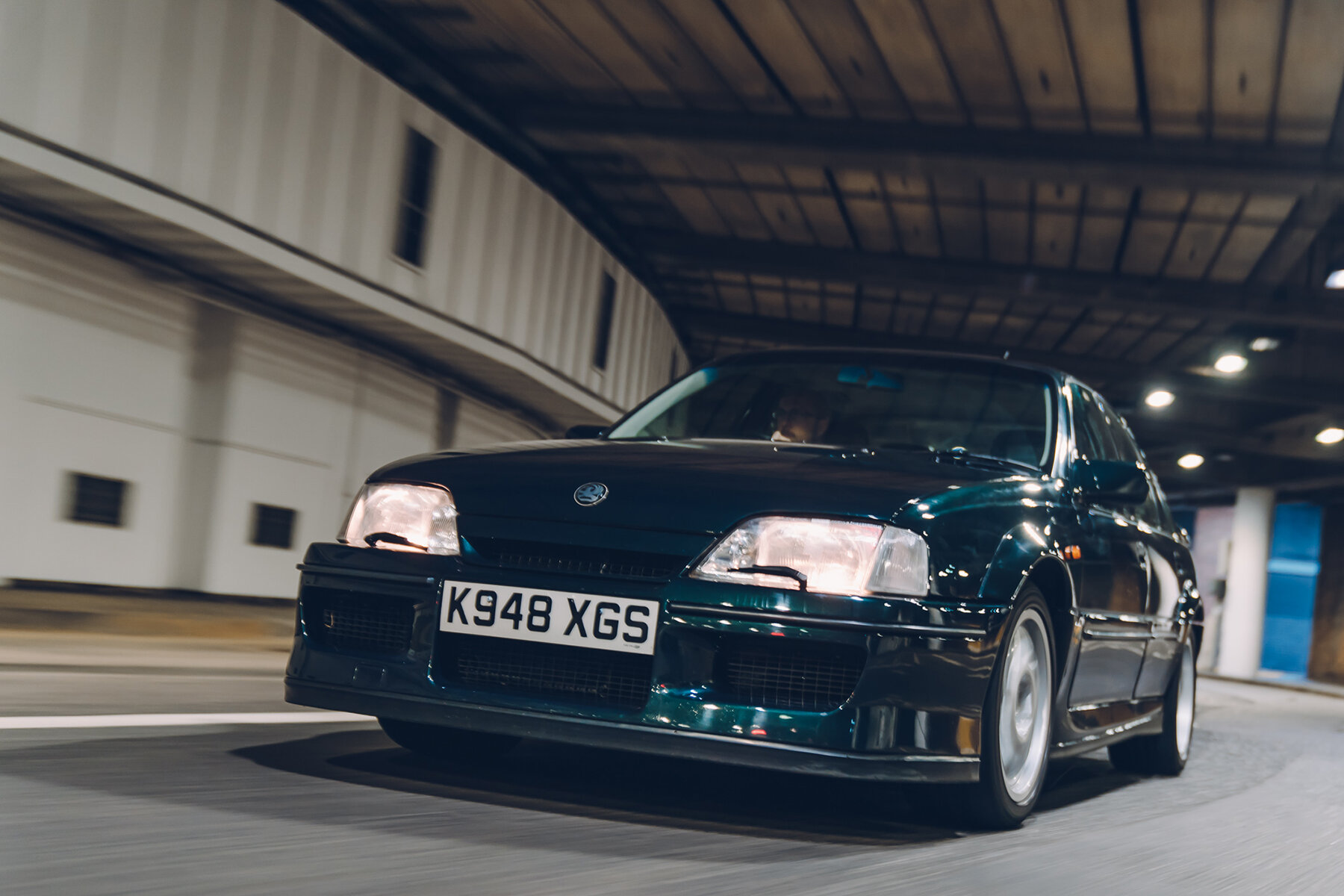
There’s no coyness about the Lotus Carlton. Its wide arches and big rear spoiler pull no punches, and it wears its Lotus badging with pride. It’s as mean and moody as when it first burst into public consciousness, riding a wave of tabloid outrage and political fury. This isn’t a car, it’s a statement of intent, its bonnet slats worn like battle scars. It may ‘only’ be a Carlton, but judging by the gaping mouths of onloookers, on UK soil the Lotus is easily the public's superstar choice of our trio. Can the Carlton genuinely mix it with the Mercedes-Benz and the Alpina?
The Lotus Carlton’s interior is the least impressive. For all its soft Conolly leather and Lotus badging, it's still a Carlton in here. It’s not terrible though, and the big chunky buttons bring a rush of nostalgia. Back in the day, when you’d laid out £48,000 for the pleasure, you might have wished for more luxury. The most important thing is that it’s immensely comfortable. Critically, it’s the only one of our trio with the steering wheel in the right place.
What’s it like to drive?
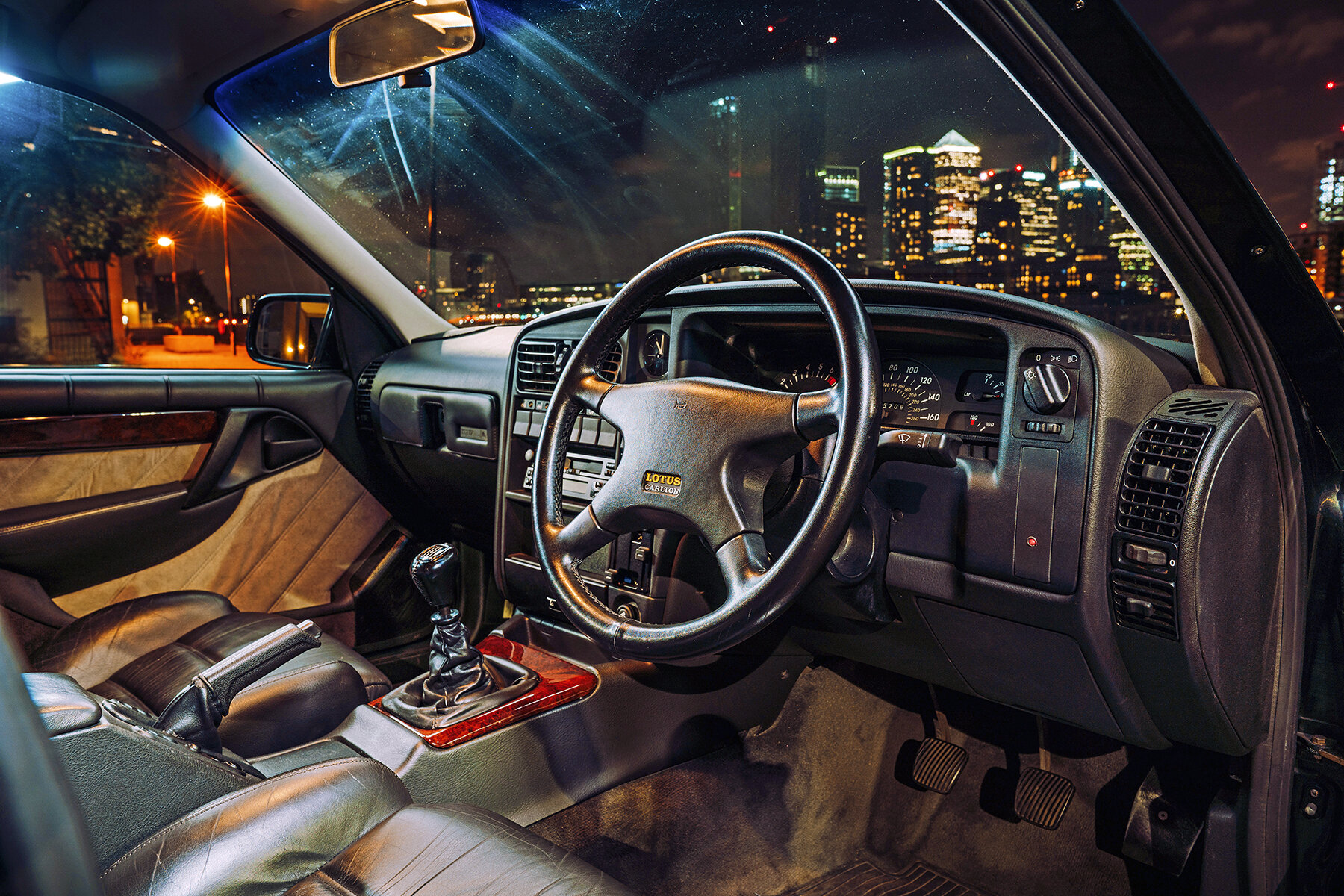
There’s a wonderfully defiantly GM feel about the Carlton. It’s big, wide and rude. The basis of it all is the same 24v straight six from a Carlton GSI 3000. Opel started the tuning in Russelsheim by strengthening the engine block and increasing the capacity to 3.6 litres. Lotus’s engineering department disassembled the engine and increased the combustion chamber volume to lower the compression ratio.
Lightweight, graphite-coated pistons, new conrods and a forged cankshaft were added, while a revised high-flow alloy intake manifold replaced the original GSi item. As with the Alpina, two Garrett T25 turbos nestle in the engine bay, but in the Lotus they are chargecooled to increase mixture density and improve combustion efficiency. The result is 300lb ft from just 2000rpm, with another 119lb ft still to come over the next 4000rpm…
It’s marginally less laggy than the Alpina, though accessing the power is a challenge. The ZF gearshift, taken from the Chevrolet Corvette ZR1, is fairly vague, the clutch pedal long and heavy. It was the only transmission that could handle the torque at the time. Shifts need to be determined and deliberate. Of the three cars here it's the Alpina that’s most user-friendly. The Lotus Carlton doesn’t just provide theatre – it has the firework display to go with it. It crackles and gurgles. The refined cruiser from earlier has disappeared – the Carlton is in full attack mode. You need to be too…
The Carlton feels like the quickest car of the three, a veritable battering ram. Where speeds allow it trails our benchmark Testarossa by 0.1 of a sec to 100mph and over the quarter mile (11.5 sec and 13.6 sec respectively), but you’ll hit the limiter at 176mph, 5mph faster than the Ferrari. The stats put the Alpina certainly ahead, but the Carlton feels so much more alert; it always feels as if it’s on the cusp of the next big-lunged charge. You have a Corsa’s worth of extra torque to play with over the B10, and the Carlton is fractionally lighter. The Alpina is 0.1sec slower to 100mph, but will be 3mph faster on the limiter.
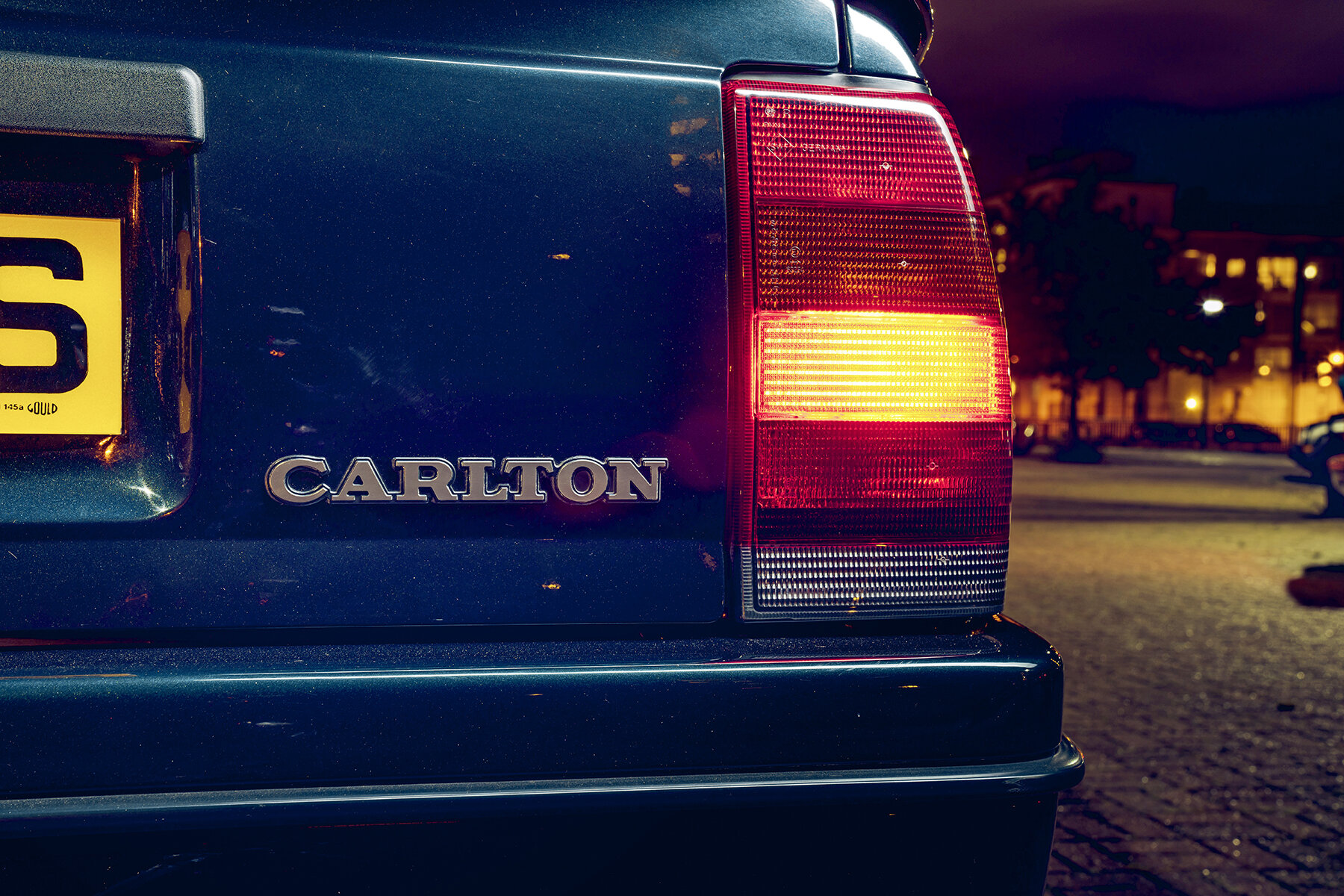
How is it in the bends?
The steering is speed-sensitive, but it’s not particularly light or brimming with feel. This fits its cross-continental character, but out here in the sticks, matched with the vague gearbox and enormously long clutch pedal, getting the most out of the Carlton is no mean task. Stick with it and you'll find excellent grip. Push harder and you'll find adjustability in the linear chargecooled turbo's delivery, but the nose always wants to pull wide, and it feels like someone's left a sack of spuds in the steering rack. With more right leg adventure there's real liveliness in the rear end. Aiding such exploits is a LSD sourced from a Holden Commodore and that doesn't quite live up to the billing when it's pushed to extremes.
The Carlton's suspension was beefed up to deal with all this. You got twin-tube McPherson struts up front, softer spring rates front and rear, and altered rear multi-link suspension positioning. Brakes are vented discs fore and aft, and AP Racing calipers direct from Group C Sportscar racing. This is a very serious bit of kit.
Some believe that the definition of a driver's car applies to cars that flatter the driver. Others apply it to cars where driver skill is necessary to get the best out of it. The Carlton is very much in the latter camp. The more time you spend behind the wheel, the more you build a rapport.
You might think that build quality is where the Lotus Carlton might fall down. It can’t hide its GM parts bin origins: the dashboard is exactly the same as that of the repmobile Carlton. But even as you slam into sixth having used up all of fifth, the Carlton is compliant. Still, there’s more noise, more vibration, more of everything – happily the Carlton is more of an event. The afterburners light as the turbos haul you forward. It feels like you’re riding a comet into the sun, pushed by the Almighty’s big hand.
Mercedes-Benz E500

The Mercedes-Benz E500 might not be as overt as the Alpina, but it is a very rare ‘Limited’ version. One of only a few E500s to take the 1994 W124 facelift, it was further emboldened by 17in alloys that also saw service on the eyepopping, bespoiled 190E Evolution II DTM homologation special. A keen eye will spot the wider front wings, there to accommodate the wider track to support the weight of its 5.0-litre V8 which marked out E500s (or 500Es) from lesser W124s.
Rather more E500/500Es are available than the Lotus Carlton and Alpina B10 Biturbo, despite them being left-hand drive only, as a handful of cars were officially sold here. Each one took 18 days to build by hand. The parts were delivered to Porsche’s Zuffenhausen plant – the line used for the 959 and later the Audi RS2 – to create a rolling chassis. These were then trucked to Mercedes-Benz’s Sindelfingen plant for paint, then back again to Porsche for engine implant and final assembly, before returning to Mercedes for final inspection.
Unlike some handbuilt cars of the era the E500/500E feels immediately solid the second you clunk the heavy doors closed. The Limited version you see before you features two-tone leather seats with a weird grey finish. It's wonderfully comfortable – of all the cars here, it’s the one that feels most relaxing. Small wonder its fans find them addictive – Rowan Atkinson had several.
What’s it like to drive?
The Mercedes-Benz is the slowest of our group but that doesn’t seem to matter behind the wheel. Leave the savagery to the savages, it says. It’s still exceptionally potent; after all, the M119 V8 was purloined from the 500SL (R129) and further fettled with a different ECU and a longer inlet manifold. There's no muscle-car rumble: just rolling around, it’s very difficult to feel any difference to a normal W124. It’s a feeling you don’t really shrug off as you delve deep into the footwell with the extremely long-travel fun pedal.
The four-speed autobox is smooth, but hardly quick. You’re just about to wonder whether the hype’s worth it… then you look down and see the speed. Don't mistake the V8’s smoothness for lethargy. The engine’s still pulling and the revs have barely got past 4000rpm. If the Alpina is a catapult, the E500 makes you feel like a blob of tomato sauce on the end of a sucked-in string of spaghetti.
It’s a seamless surge where there’s just you, your nerve, and the prospect of a lengthy ban. This is a car for high speed comfort. The V8 is muted most of the time, and even when you do hear it pipe up closing on 5000rpm, the howl doesn’t dominate the experience.
How is it in the bends?
It was claimed that 4000 components were bespoke to the 500E/E500 when it was launched, but much of the new hardware was taken from the R129 SL500. The droptop gave up its brakes, rear axle and front suspension, though from 1993 the stoppers were upgraded to V12 SL600 specification. The track was 1.5in wider and the stance one inch lower than a normal W124.
Enough to feel different? Yes, if you persevere with it. Work with the traction control and the E500 is a stunning performer. Though this is a car designed for speed, not hardcore handling, you really can feel the difference through the wheel. It still won’t be as forthcoming as the others here, but it's keener to respond than any other W124. It still doesn’t feel very involving, and the seats lack lateral support, but driven smoothly and quickly it’s deeply accomplished. You just wish there was more theatre.
Initially at least, the E500 seems remote and disinterested. While the feather-light steering firms up under load, there’s only a vague idea what’s going on at the rear wheels. Traction control (which you can’t switch off) cuts power the moment the computer detects slip. It’s all very clever, especially for the early 1990s, but to start with it feels like the fun gene has gone.
The Mercedes feels most efficient. If you’re a business type for whom big speeds are simply part of the commute, the E500 is a faithful ally. Quiet and refined with hefty brakes for outside lane dawdlers and slugs of torque for blasting past them, it's the rational choice, but you come away from it impressed rather than staggered. Restricted, it hits 155mph, unrestricted it’s around 175mph, but it doesn’t feel quick. That's a testament to its refinement.
What’s the best 1990s supersaloon? The CCfS verdict

Picking a winner from these is like choosing fillet steaks at Michelin-starred restaurants. They’re all meatily satisfying. It's the presentation that's the difference.
You probably had a favourite as you started reading, and you probably still do now. For some, the appeal of the Mercedes-Benz E500 is that it is a Benz of the old tradition, with a bonus of rampant pace. It’s not as exciting as the other two, but that’s the point – and that's what makes it peerless for its fans. It’s subtle, refined and it absolutely nails the 'LearJet on wheels' brief. You could accuse it of being one-dimensional as a result, but you can’t help but be impressed by the engineering excellence.
Impressed, but not enthralled. That's Lotus Carlton territory. It might not wear a 'proper prestige' badge but that either doesn’t matter or adds to the appeal. This homegrown four-door saloon became a household-name performance legend by flicking a sharp two-fingered salute at the supercar hierarchy. How many cars can claim to have been discussed in Parliament? Like some of the MPs who stalk those halls, the Carlton is belligerent and difficult, but it wields almost unstoppable power.
Almost, because the Alpina B10 Biturbo is the better all-round car. It’s nearly as well damped and comfortable as the Mercedes, yet it's just as exciting when fully lit as the Carlton. Unlike the Carlton, however, it’s a much more pliant machine when you head off the autobahn in search of twistier roads. It gets to the heart of what makes the supersaloon so great: it does everything a supercar can do, but with room for four and luggage. It’s the original, and the best in our big dog line up.
Winner: Alpina B10 Biturbo
